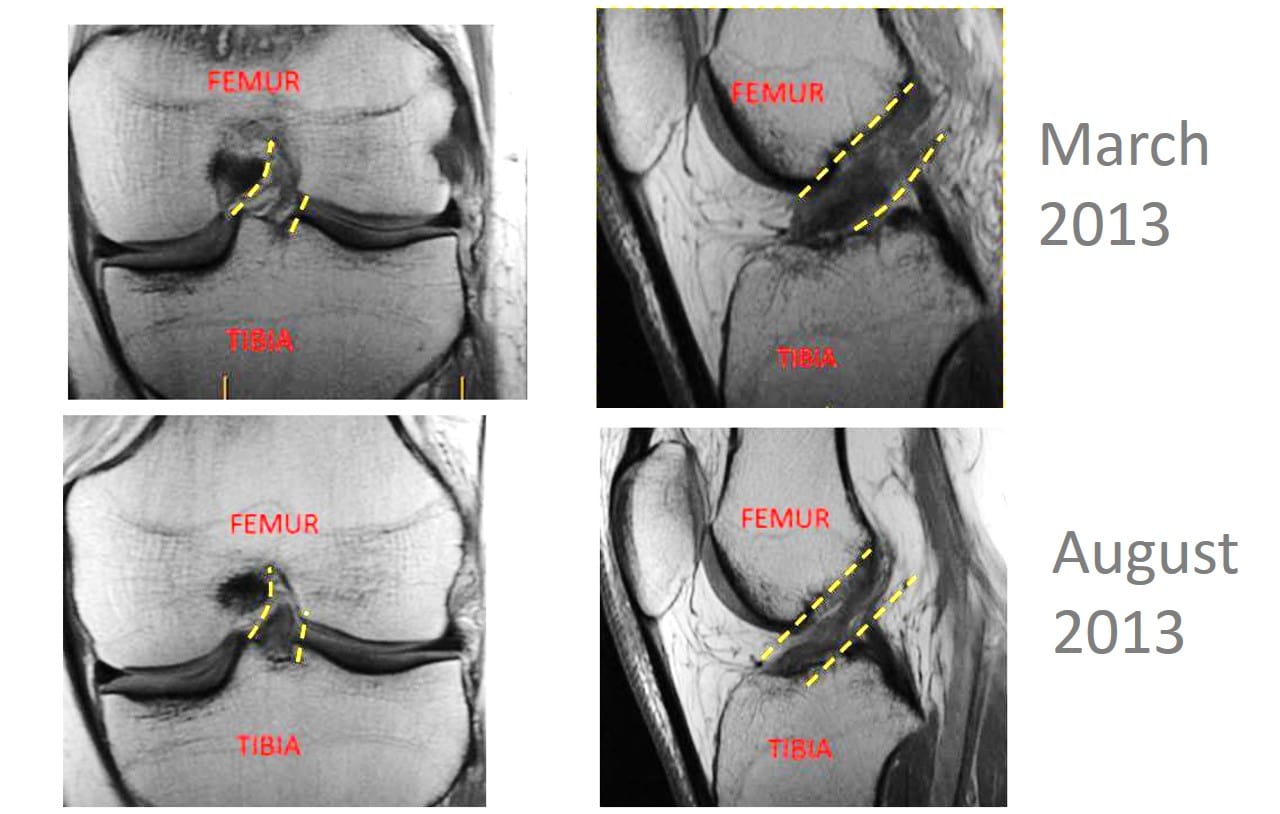Another Shortened ACL Repair Recovery Time
Given the nature of the surgery, is a shortened ACL repair recovery time possible?
First somebody surgically removes the torn ACL and then drills holes in the bone to anchor a replacement ACL (so there is really no repair). You then spend about a month on crutches and then begin a long and protracted rehab program. Is there a better way? How about using stem cells to repair the ACL that’s already in there rather than tearing it out? I’ve blogged before showing that we can inject stem cells using the RegenexxACL procedure under exacting fluoroscopic guidance. I’ve showed many ACL knee ligaments that have much better appearance on post injection MRIs and on exam these knees go from unstable to more stable. This most recent example above is a physician who was treated by Dr. Schultz with the Regenexx-ACL procedure. He had no surgery and he had no ACL recovery time, he just got an injection and continued with his usual activities. The before picture above shows a very tattered and exploded appearing ACL (inside the yellow dashed lines). Now compare that appearance to the after images in August of this year. This ACL now looks like a tight rope which is denser (darker) or more like a normal ACL.
We now routinely see these images showing MRI evidence of ACL repair with the Regenexx-ACL procedure. Nobody else has developed a technique to accurately place stem cells in the ACL, more of the kind of innovation you can expect from the first in the Orthopedic stem cell field.
If you have questions or comments about this blog post, please email us at [email protected]
NOTE: This blog post provides general information to help the reader better understand regenerative medicine, musculoskeletal health, and related subjects. All content provided in this blog, website, or any linked materials, including text, graphics, images, patient profiles, outcomes, and information, are not intended and should not be considered or used as a substitute for medical advice, diagnosis, or treatment. Please always consult with a professional and certified healthcare provider to discuss if a treatment is right for you.
